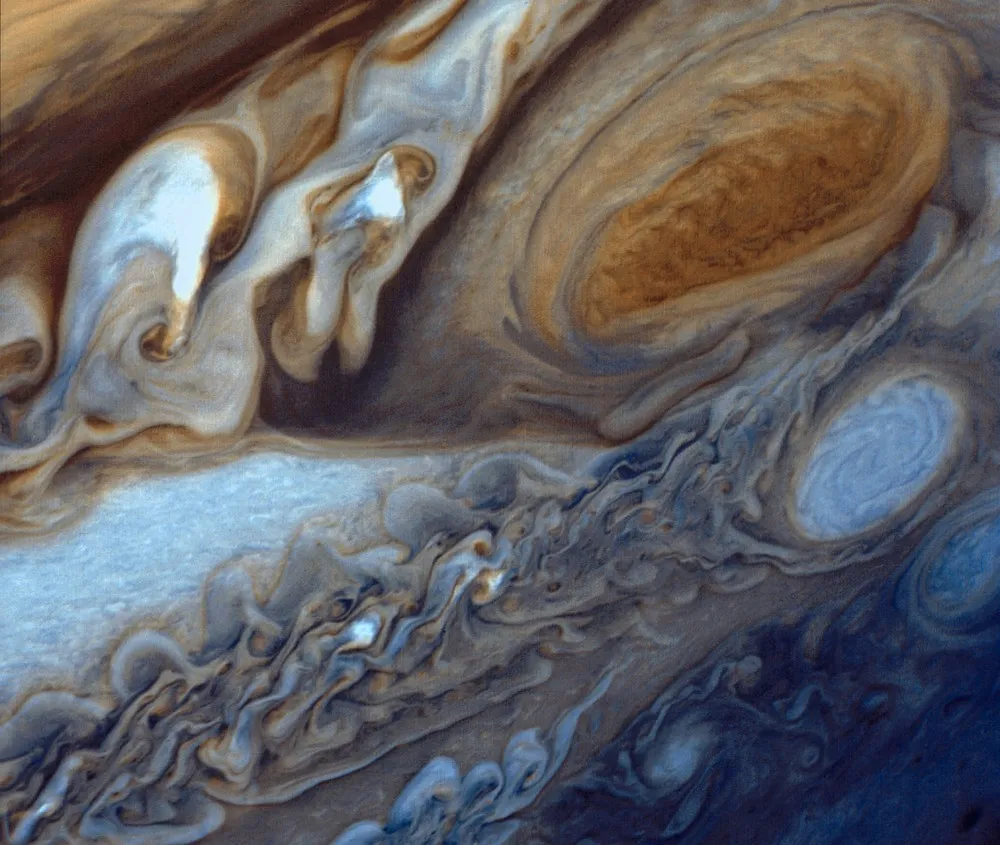|
NASA's Voyager 1 took this photo of Jupiter's Great Red Spot in 1979. Scientists have long wondered why Jupiter’s upper atmosphere has temperatures similar to those of Earth, even though the biggest planet in the solar system is five times farther away from the sun. The answer may be The Great Red Spot, an enormous storm big enough to swallow three Earths that has been raging on Jupiter for at least three centuries, a study showed on Wednesday. Using an infrared telescope at Hawaii’s Mauna Kea Observatory, scientists discovered that the upper atmosphere above the Great Red Spot – the largest storm in the solar system – is hundreds of degrees hotter than anywhere else on the planet. The storm spans 22,000 kilometers by 12,000 kilometers (13,670 miles by 7,456 miles) and is located in Jupiter’s lower atmosphere. The top of its clouds reach altitudes of about 50 km (31 miles). By a process of elimination, the newly found hot spot must be heated from below, the study concluded. The finding provides a strong link between Jupiter’s upper and lower atmosphere, though the exact process by which heat is transferred remains unknown. The most likely energy source is acoustic waves that provide heat from below, the study said. Scientists also are unsure why the storm is brick red, nor why it has changed color over time. In a 1900 report in the Seattle Post-Intelligencer, scientists described the oval storm as salmon pink. Recent images from the Hubble Space Telescope show it has become orange tinged and more circular. (Photo by Reuters/NASA)
|

